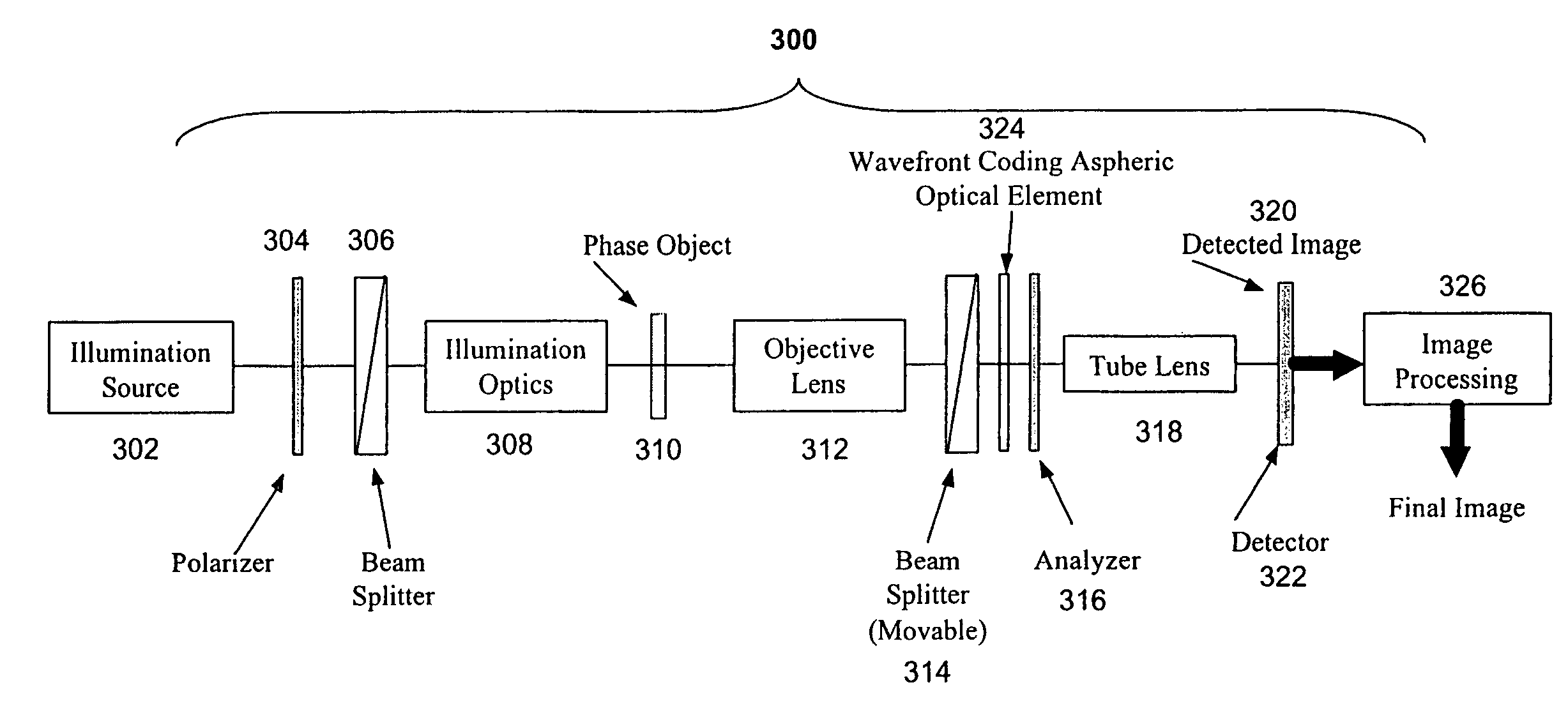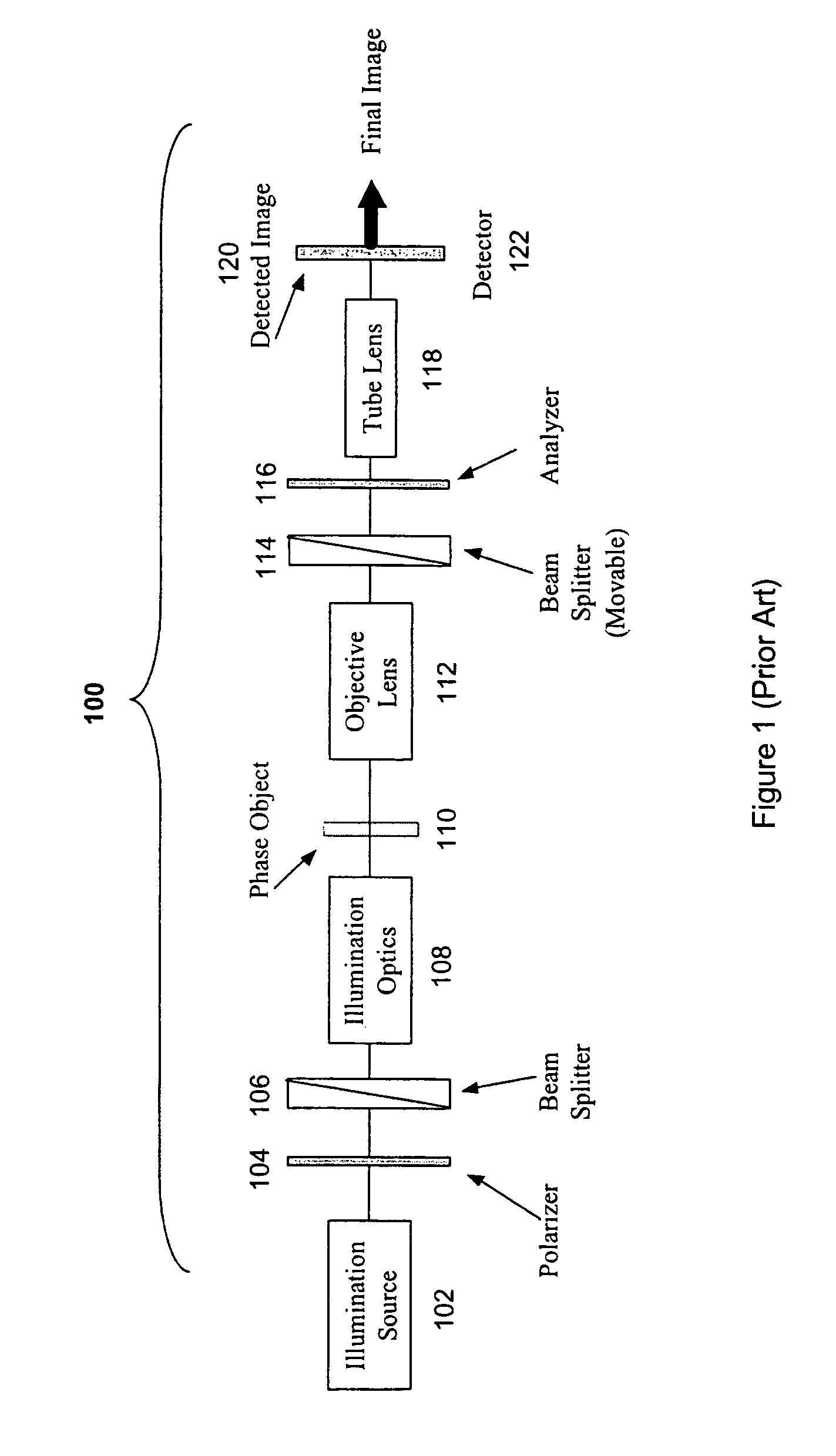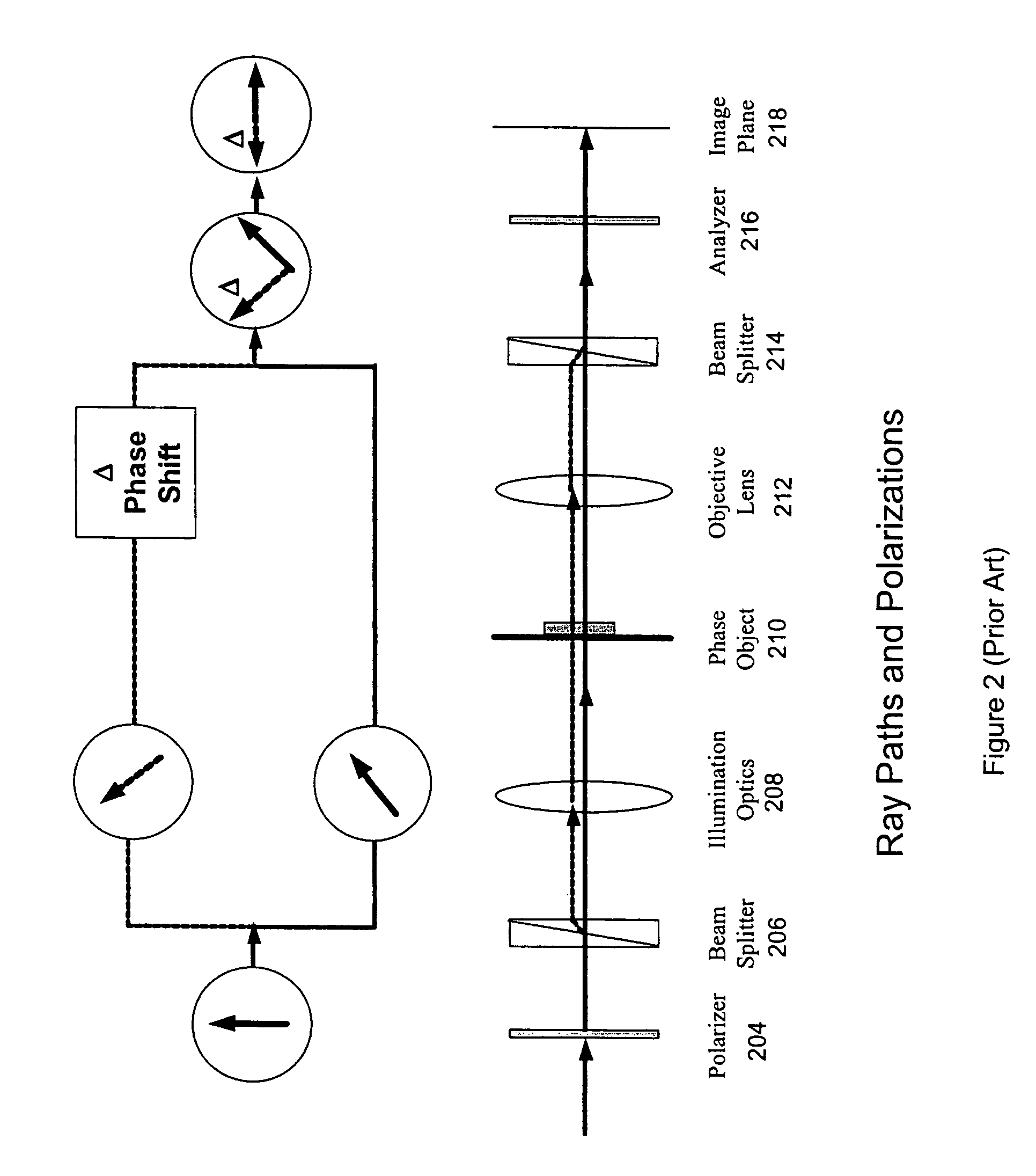Wavefront coding interference contrast imaging systems
a contrast imaging and wavefront coding technology, applied in the direction of direction/deviation determining electromagnetic systems, optical radiation measurement, instruments, etc., can solve the problems of difficult image, difficult image, and difficult image of objects that are transparent or reflective but have variations in index of refraction or thickness, etc., to improve contrast imaging of phase objects, improve contrast imaging, and control focus-related aberration
- Summary
- Abstract
- Description
- Claims
- Application Information
AI Technical Summary
Benefits of technology
Problems solved by technology
Method used
Image
Examples
Embodiment Construction
[0053]Wavefront Coding can be used with conventional objectives, polarizers and beam splitters in Interference Contrast systems, as shown in FIG. 3, to achieve an increased depth of field in an optical and digital imaging system. This can be explained by considering the Object Modifying Functions of conventional Interference Contrast systems separately from the Object Imaging Functions, as shown in FIG. 4. By considering these two functions separately, modification of depth of field can be explained in terms of the Object Imaging Function. Extending the depth of field of the Object Imaging Functions of Interference Contrast systems is shown in FIGS. 5-8. FIG. 9 shows real-world images of human cervical cells taken with a system having only Interference Contrast and a comparison to an image from a Wavefront Coding Interference Contrast system.
[0054]FIG. 3 shows a Wavefront Coded Interference Contrast imaging system 300 including Wavefront Coding and post processing in accordance with...
PUM
 Login to View More
Login to View More Abstract
Description
Claims
Application Information
 Login to View More
Login to View More - R&D
- Intellectual Property
- Life Sciences
- Materials
- Tech Scout
- Unparalleled Data Quality
- Higher Quality Content
- 60% Fewer Hallucinations
Browse by: Latest US Patents, China's latest patents, Technical Efficacy Thesaurus, Application Domain, Technology Topic, Popular Technical Reports.
© 2025 PatSnap. All rights reserved.Legal|Privacy policy|Modern Slavery Act Transparency Statement|Sitemap|About US| Contact US: help@patsnap.com



